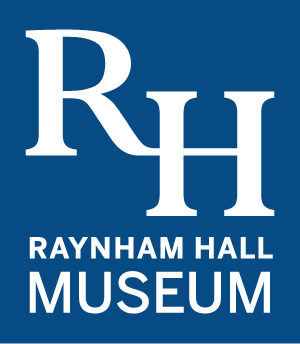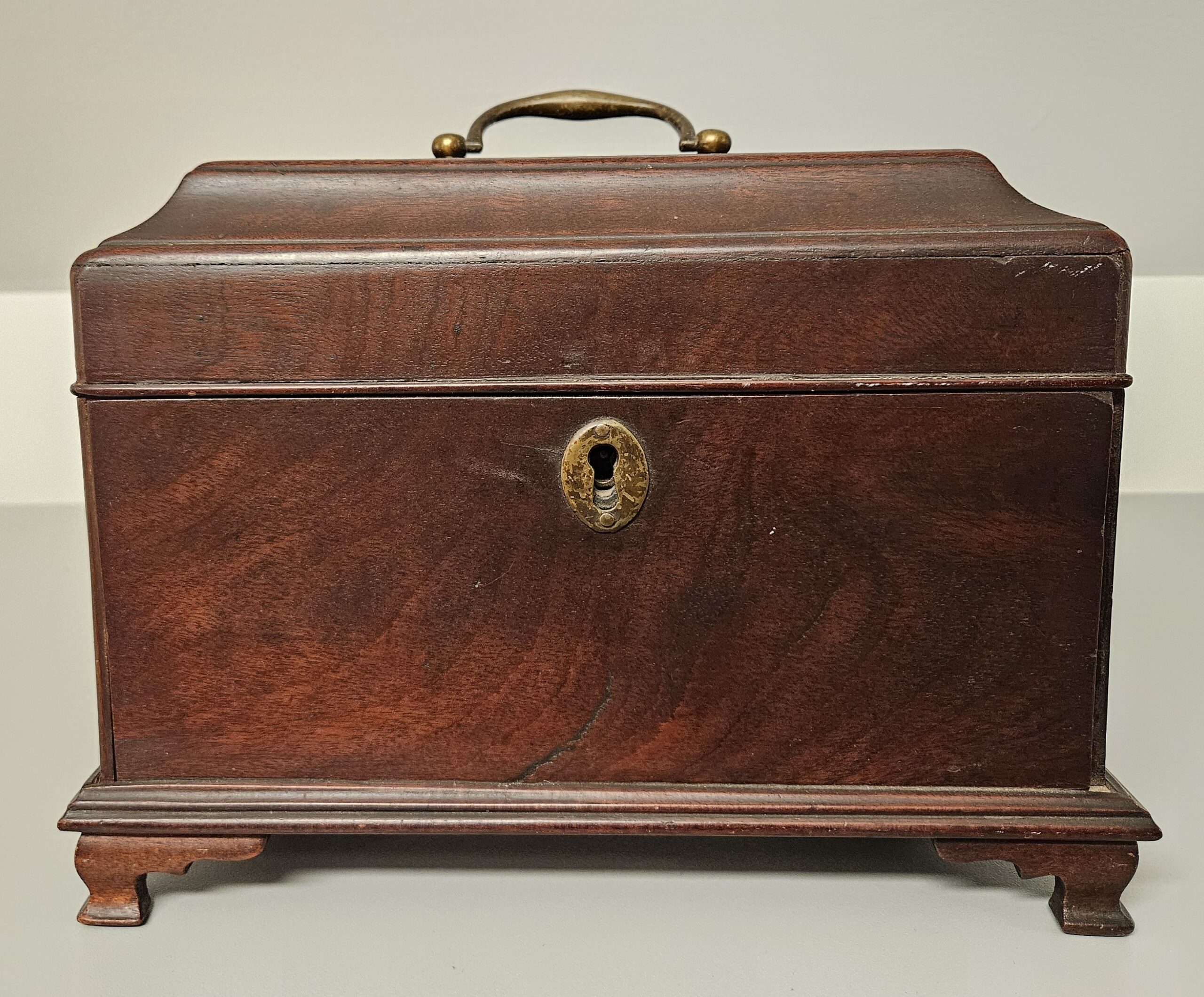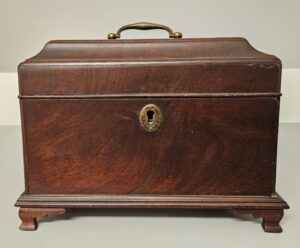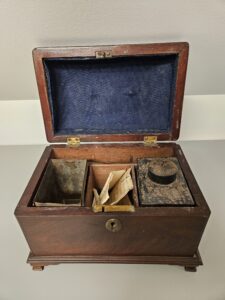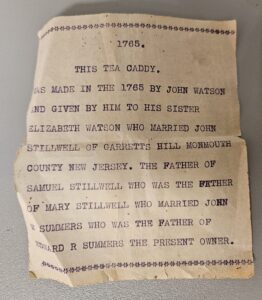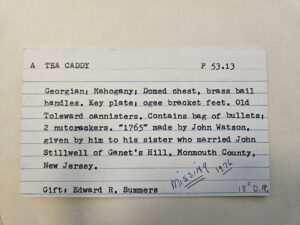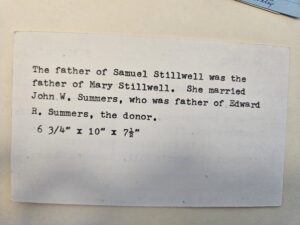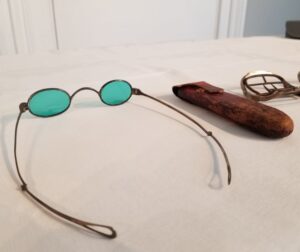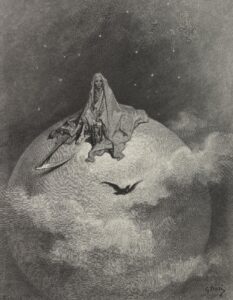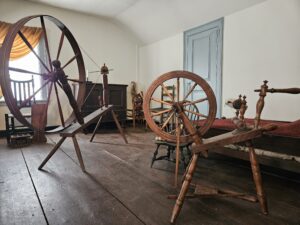Written by: Jessica Pearl
We recently had an unexpected visit to the museum. A couple, let’s call them John and Jane Doe, stopped by the museum saying they had something that belonged to the museum. What they pulled from their bag was an 18th-century mahogany tea caddy! At first glance, I was unsure of its ownership. Upon inspection of the tea caddy, I found an accession number on the bottom and inside, a piece of paper with its history mentioning the Summers family of Oyster Bay.
We are thrilled to have this historic object come back to the museum. Jane and John shared very little information about the object besides that they found it in a house they’re renovating. Upon researching our records, I discovered that the tea caddy belonged to us, and inventories show it went missing in 1976.
Inside the tea caddy are the key, two toleware canisters that held the tea, one with a missing lid, and two nutcrackers. It’s made of mahogany, stands on bracket feet, and the interior has three sections with a small space at the back, possibly for a spoon. Originally, there may have been a bowl between the two canisters, either used to mix black and green teas or to hold sugar.
According to the document inside the tea caddy, it was made in “1765 by John Watson and given by him to his sister Elizabeth Watson who married John Stillwell of Garrett’s Hill, Monmouth County, New Jersey. The father of Samuel Stillwell who was the father of Mary Stillwell who married John W. Summers who was the father of Edward R. Summers, the present owner.”
Edward R. Summers was a well-known Oyster Bay resident. He served in the 15th New York Regiment during the Civil War and was assigned to garrison duty during the draft riots in New York. His first time voting was for the re-election of Abraham Lincoln in 1864. He also was an unofficial record keeper for the Town of Oyster Bay!
This tea caddy, made in the years leading up to the American Revolution and passed through a family who lived during the Civil War, shows how Raynham Hall and our collections serve as a microcosm of the broader American experience through the centuries. Thank you, Jane and John Doe, for having the courage to return this object to its home!
